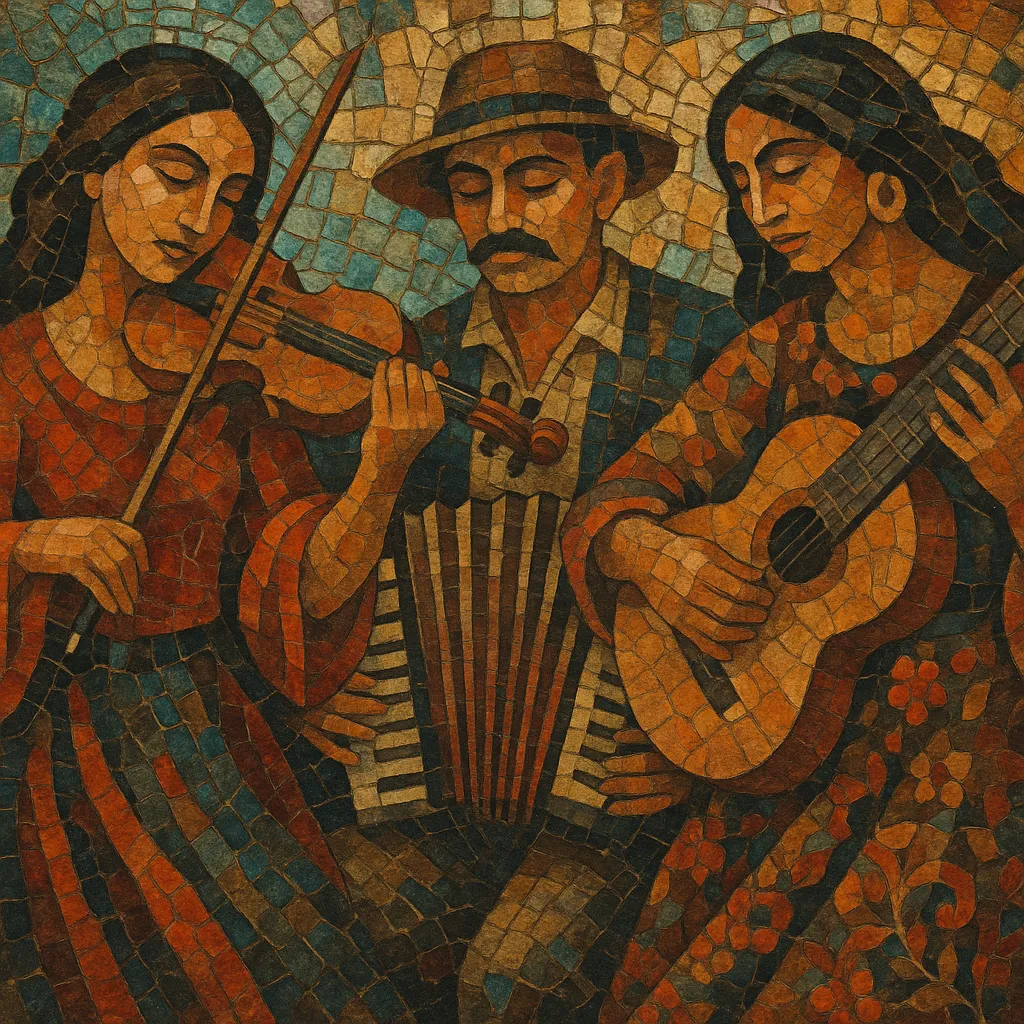Romani folk music is the diverse, diasporic musical tradition of the Romani people, whose ancestors migrated from the Indian subcontinent into the Middle East and Europe during the late medieval period. Carrying core melodic and rhythmic ideas with them, Romani musicians absorbed and reinterpreted local styles, creating a family of related yet regionally distinct musics across Central, Eastern, Southern, and Western Europe.
Common features include ornate, highly expressive melodies with melismas and slides; flexible tempo practices (rubato introductions leading into faster dance sections); and modal colors such as harmonic minor and the Phrygian dominant (often called "Gypsy" or freygish in European discourse). Instrumentation varies by region—fiddles and cimbalom in the Carpathian basin; clarinet, accordion, and cimbalom in Romania and Hungary; brass bands in the Balkans; and guitar-based ensembles among Iberian Gitanos. Dance repertoires (e.g., csárdás, hora, kolo, čoček) and the Romani language often feature, alongside local tongues.
The Romani people originated in the Indian subcontinent and migrated westward between roughly the 10th and 14th centuries. As they settled in the Byzantine and Ottoman spheres and then across Europe, their musicians adapted to and collaborated with local communities. This produced a fluid tradition that retained South Asian melodic sensibilities while embracing Middle Eastern and European modal and rhythmic practices.
By the 18th and 19th centuries, Romani ensembles were central to public entertainment in the Habsburg lands, the Balkans, and beyond. In Hungary and Romania, Romani bandleaders (lăutari, cigány zenészek) shaped urban and court repertoires, codifying practices like rubato preludes (e.g., doina-style introductions) that accelerate into virtuosic dance sections (lassú–friss). Their sound influenced classical composers (Liszt’s “Hungarian Rhapsodies,” Brahms, Sarasate), who popularized a European “Gypsy style.”
Regional variants crystallized: cimbalom- and violin-led bands in the Carpathian basin; clarinet-accordion-cimbalom lineups in Wallachia and Transylvania; brass bands in Serbia, North Macedonia, and Romania (later celebrated at Guča); and guitar-centric traditions among Iberian Gitanos. Repertoires included dances such as csárdás, hora, kolo, cocek/čoček, and romances and laments featuring Romani and local languages.
The recording industry and radio spread Romani music globally. Mutual influence with Jewish klezmer, Balkan folk, Turkish and Greek urban styles, and local popular musics intensified. Postwar, stars like Šaban Bajramović and Esma Redžepova brought Romani vocal aesthetics to mainstream audiences, while Romanian lăutari and Hungarian ensembles kept urban salon and village traditions alive.
From the 1990s onward, groups like Taraf de Haïdouks and Fanfare Ciocărlia sparked international interest. Fusion and pop offshoots (e.g., manele in Romania, global “Balkan brass” circuits, and Gypsy jazz revivals) drew on Romani idioms. Festivals, world-music labels, and academic ethnomusicology helped document both historical legacies and evolving contemporary practices, even as debates about representation and stereotyping encouraged more Romani-led authorship and advocacy.


